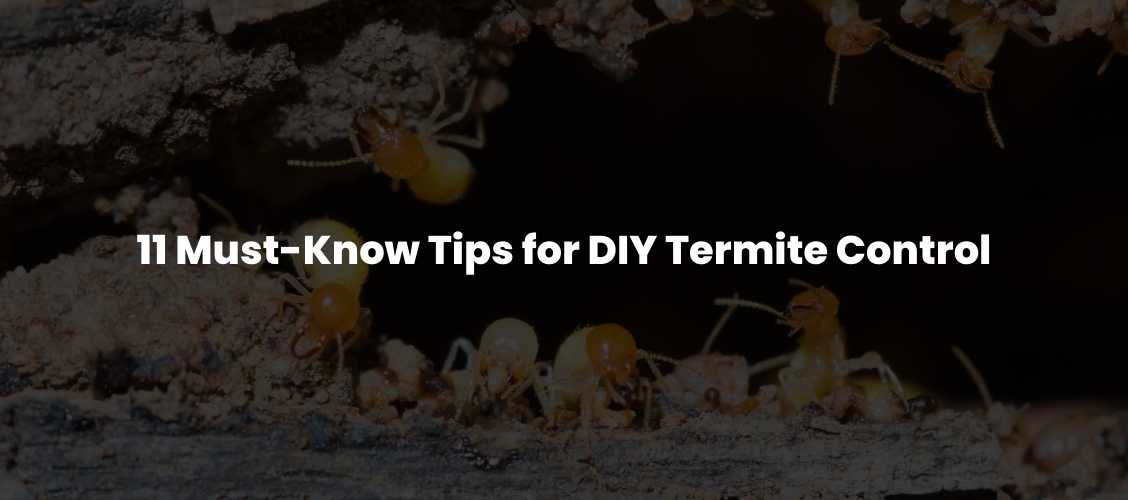
It would be a wise choice if you started getting ready to detect and get rid of these wood-chewing termites as there is no set period for them to enter.
It's not necessary to contact pest control right away. However, as a homeowner, you can take particular actions to defend your property from these termites.
Here's a guide to DIY termite treatments you may take to protect your house.
Inspect Your Foundation Each Season
Take a stroll around your foundation many times per year to check for any indications of damage that will help you create a termite treatment strategy. Although termites do not consume concrete, they produce mud tubes, indicating that they are attempting to scale your foundation in search of siding or other edible wood. Therefore, a closer investigation and some DIY termite control tactics are necessary if you spot mud tubes.
Grab Your Flashlight
Get a good flashlight, walk down to your crawlspace or basement, and look for termites there. Look around carefully, paying particular attention to edges and corners for any indications of damage or mud tubes. Additionally, you may always do the traditional thumb test if you come across wood that appears to have termite damage. To use this DIY Termite Control method, press your thumb into the wood; if it gives, you have an issue. Another termite treatment plan is searching for little grass piles and other indications that termites have been active.
Maintain Proper Ventilation and Sealing
For moisture control, ventilation and sealing are essential. Condensation can accumulate in attics and basements without enough ventilation, soak into the wood, and create the ideal environment for termites (plus condensation causes mildew and rot). Also, moisture can accumulate behind your walls without the proper sealing or barriers. Yet, this is one of the most effective termite control methods since the absence of that moisture reduces the motivation for termites to go scavenging.
Termites in the Yard? Bait Them Away
Have termites been spotted in your yard? Naturally, you don't want them to discover your home. This is the situation when termite bait stations excel. Termite bait stations serve as a termite repellent, luring them away from your home and assisting in destroying the nest before it can do extensive harm.
Keep Wood Piles Away From Your House
Termites find the transition from external wood to siding and inside the wood simple. So give them no "springboards" into your home, please. Keep any wood piles at least 20 feet away from your home for DIY termite control. And that includes natural wood heaps like tree stumps, compost mounds, and firewood. One of the most Effective DIY Termite Treatment available is this one.
Trim Trees and Shrubs
Additionally, live vegetation can be a hazard. Maintain clipped shrubs that are far from your house. Avoid pushing mulch up against your home when caring for bushes and plants. For do-it-yourself termite control, check that no tree limbs are too close to your house and if there are any surrounding trees.
Create an 18-Inch Space Between Soil and Wood
If you want to protect the wood, keep it at least 18 inches away from the soil (where termites hide), especially on siding and decks. Termites won't be interested long because of this. The most straightforward approach is to utilize a gravel bed, which can be used for DIY termite treatment and adequate drainage.
Dig a Trench and Apply Termiticide
Have you recently overcome a terrifying termite problem? If that's the case, you probably want to prevent it from happening again. This project to control termites at home is quite successful: A foam-based, non-repellent termite insecticide should be injected into a trench that has been dug around the entire issue area. Termites won't be frightened away from it since it is "non-repellent;" instead, they will try to pass through it and perish. And it works well for ending recurrent encounters.
Heat Can Also Kill Termites
Heat can be a very effective termite repellant and a simple at-home termite killer because termites are heat-sensitive. Termites will perish in an area if it is heated to at least 120 degrees F for at least 30 minutes. This is a practical method for DIY pesticide-free termite control. Be careful, though, as you can't do this close to wiring or plastics, and it doesn't work as well on particularly massive beams.
Use Plastic for Storage
Another major attraction for termites is cardboard. Replace any cardboard storage around your home or garage with plastic bins. Make sure that any cardboard you keep for recycling is in a recycling bin and not just stacked up elsewhere.
Guard Your Air Conditioner
Moisture is continuously produced and removed through a natural condensation when temperatures change because of how air conditioners and heat pumps work. You won't get rid of that particular form of dampness. Therefore, there is critical to ensure that your AC unit is complex for termites to locate and that your moisture drainage system is precise and effectively transports water away from your home rather than depositing it.
Conclusion
These are some of the highly effective DIY termite control methods that can help you prevent termites from entering your home. Once the termites have invaded your home and caused significant damage, things could get complicated. But don't panic; you can always contact pest control specialists to receive treatment.




